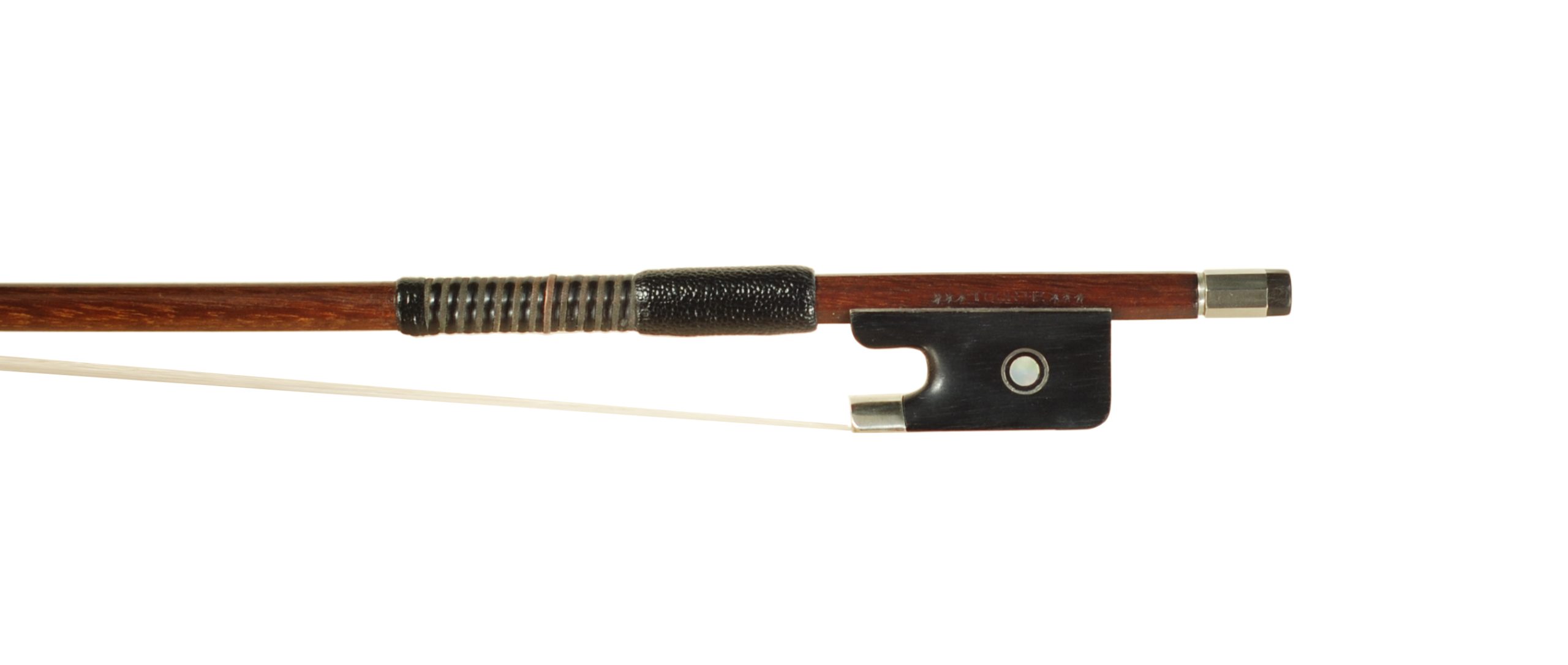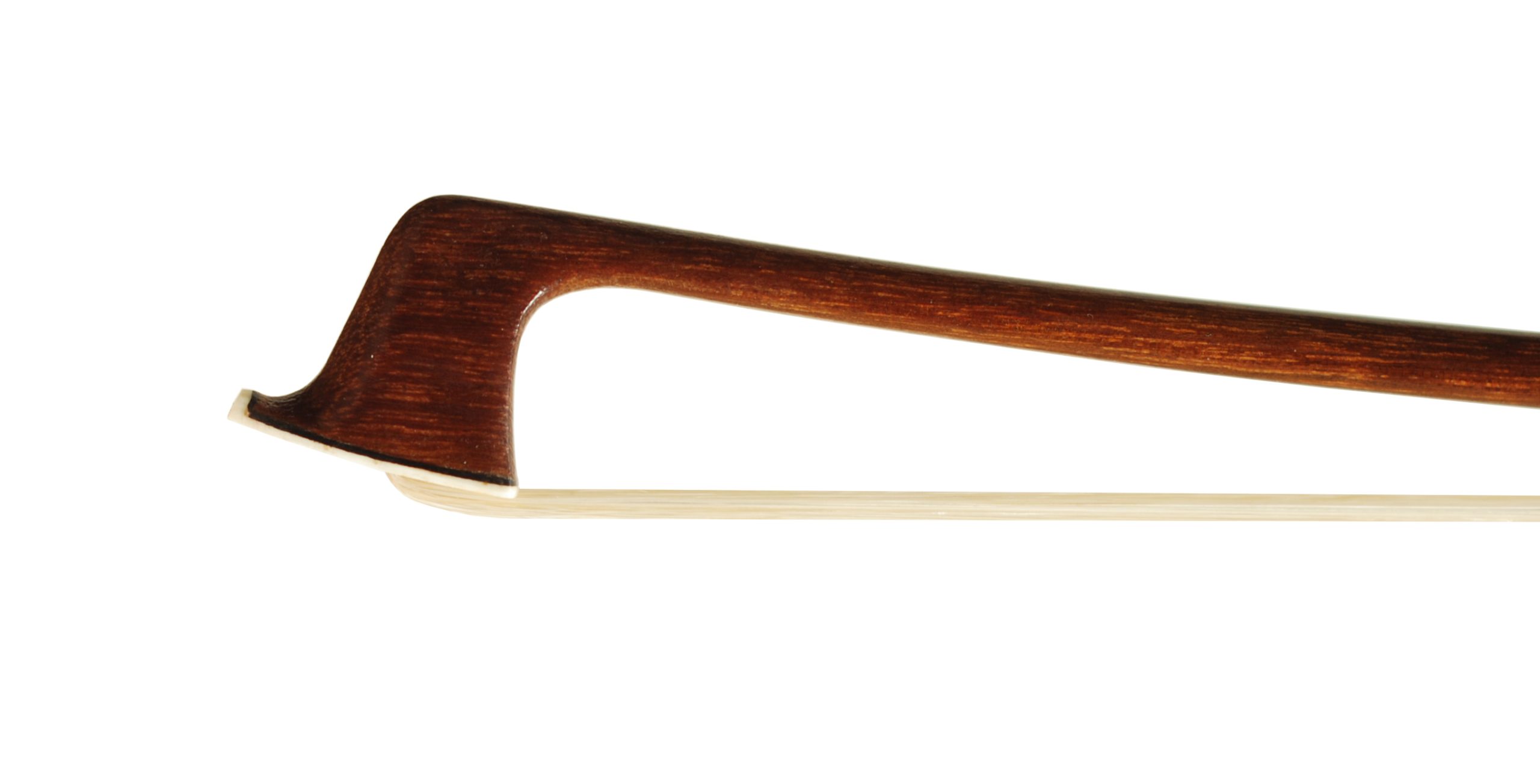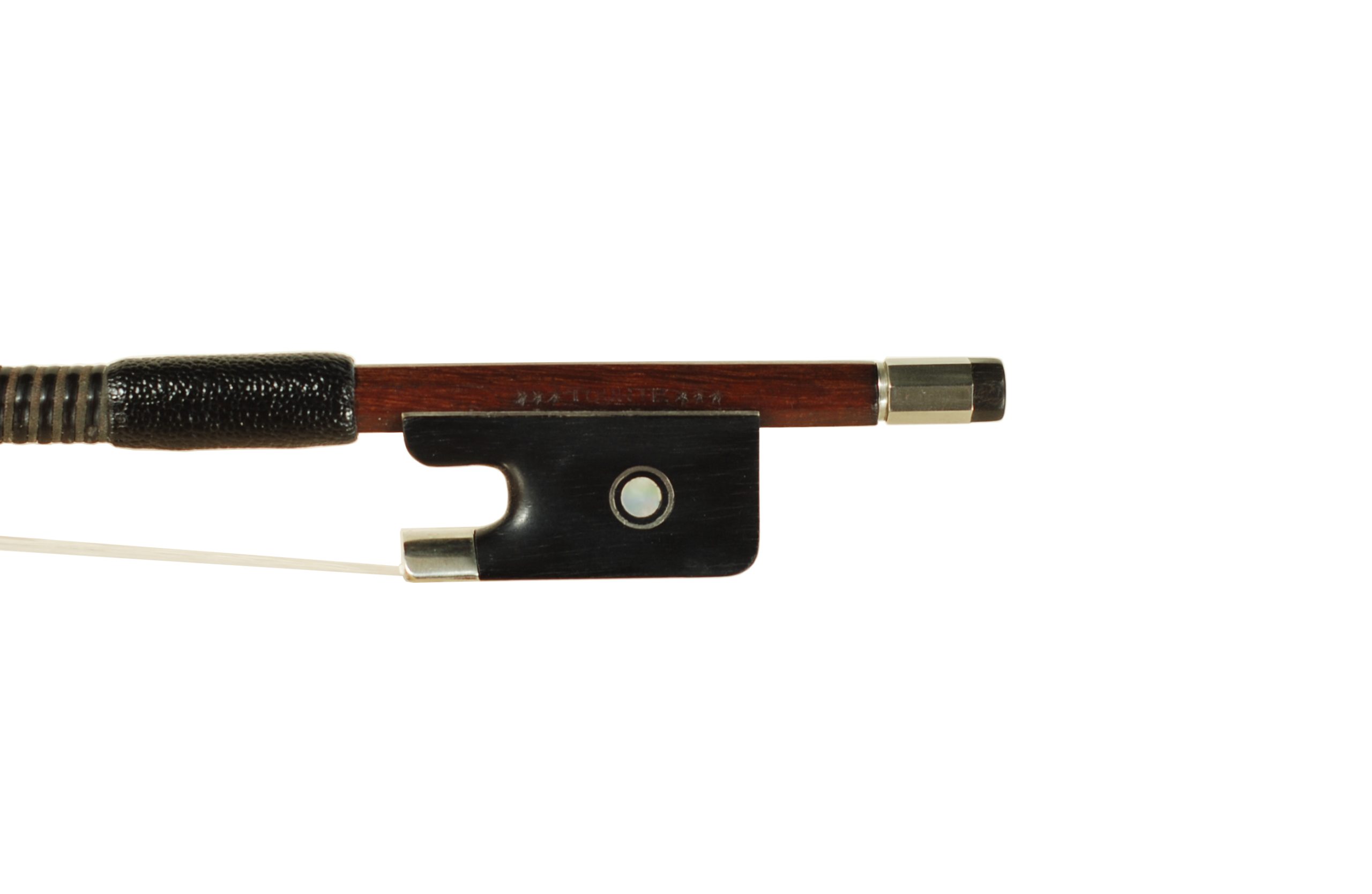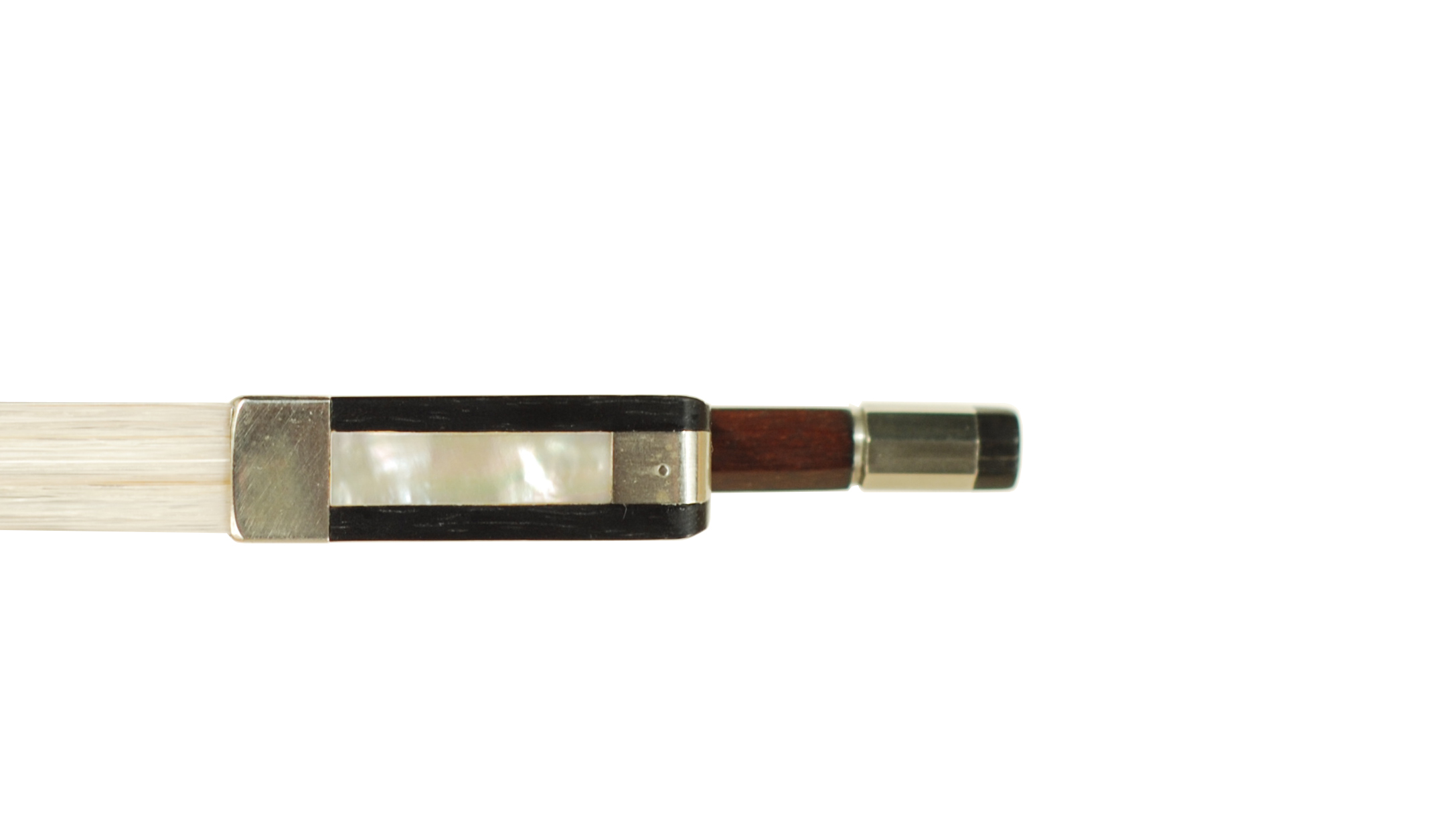Tourte Rounded Frog Violin Bow German circa 1890-1910
$685.00

Stamped:
By 1900, there were music stores by the thousands all over Europe and America. At the same time hundreds of orchestras sprang up in America, mostly in college towns and larger cities. Markneukirchen, Germany was the hub of instrument and bow making that filled the need for both bows and instruments at home and abroad. A book by Paul de Wit shows in 1900-1925 the number of dealers and makers in Europe was over 825 pages long. The city/town of Markneukirchen section is nearly 50 pages, with an additional listing for the many surrounding towns and villages. Wow! In about ten kilometers around Markneukirchen alone there were 30 small shops working just to supply parts and wood to the making shops. There also were many violin and bow makers who started out in Markneukirchen and found other villages nearby to spread out and develop their craft. Many people, thousands, were involved in the string instrument industry. The growth of music education, young journeymen, and the apprentice experience did so much to benefit young people in the region and lift the skills of people and their quality of life in general. There has been no other time before or since like what happened in Markneukirchen and surrounding area when one part of the world produced so many instruments and bows. The impact made profound effects musically all over the world.
Our Tourte bow is from this period of Markneukirchen’s heyday, closer I think to 1900. François Xavier Tourte (1747-1835) was a very famous bow maker who lived and worked in Paris from the late 1770’s into the 1830s. Tourte was considered the finest bow maker in France and made significant contributions to establish his style as the pinnacle of modern bows. Our bow is a trade bow made in a workshop that had no problem marketing the bow with the “Tourte” name stamped on the stick to help it sell. This was a common practice, especially in the early-to-mid-20th century with German bows. I saved the original whale bone and added a new leather thumb grip to capture the whalebone. This type of winding was generally seen on sticks made in the mid to late 1800’s. The tip facial was restored with a piece of casein ivory look. Casein was developed in the 1930’s and has a faint ivory grain. The Parisian eye frog is a rounded model, don’t let that throw you. It is a violin bow with an overall weight of 60.1 grams. The stick is round section pernambuco and completed in nickel silver fittings. Nickel bows were the norm for workshop bows during this period. Nickel silver is a much cheaper material made of 65% copper, 18% nickel, and 17% zinc. Nickel made sense on a workshop bow. This is a German bow that will play well for you and be a nice addition to your quiver of bows.
Weight fully haired 60.1 grams






